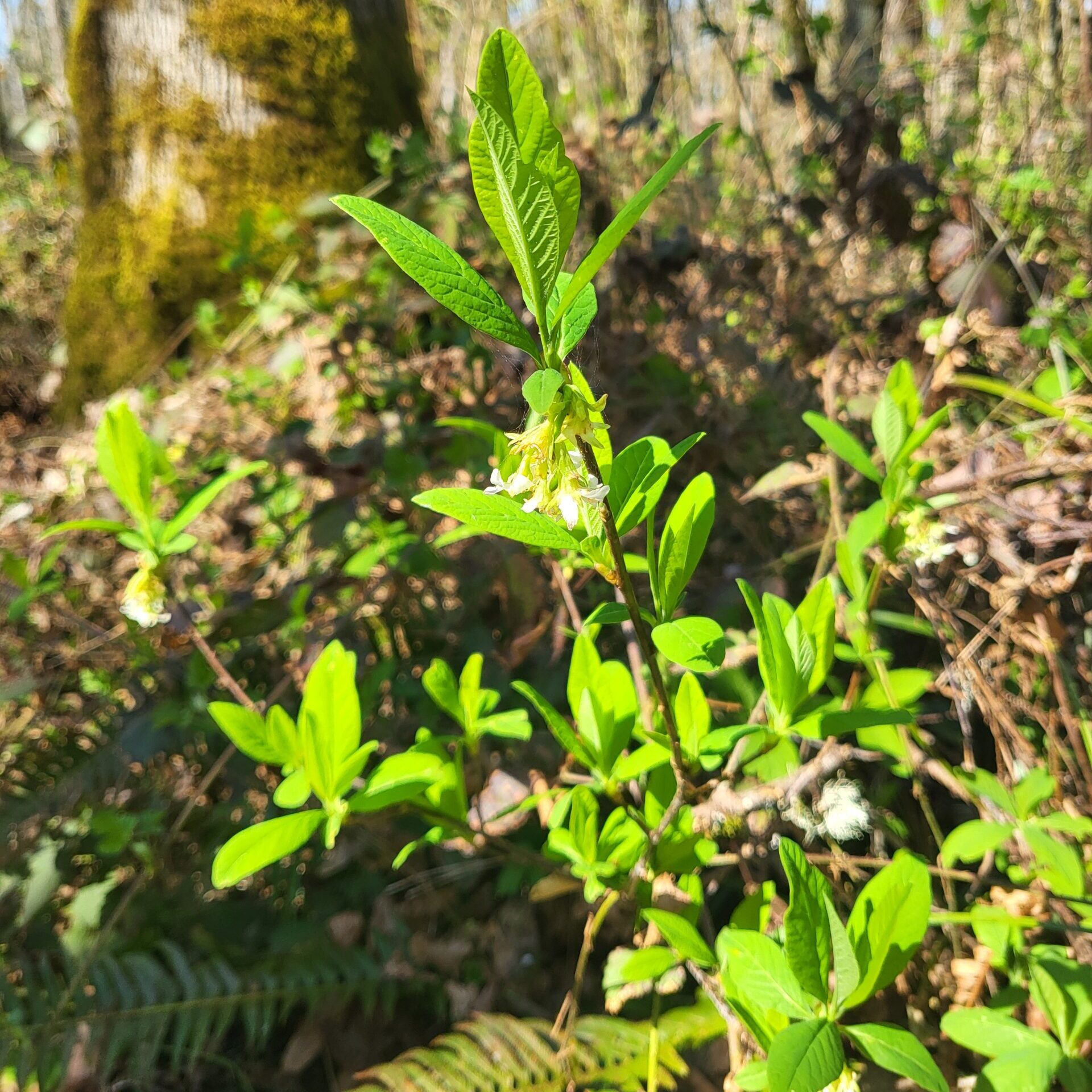Maple leaves might look familiar…
I can guarantee that you’ve seen a maple leaf before—it’s plastered right on the front of the Canadian flag! Most maple species have leaves with that same five-pointed silhouette.

Photo by Daniel Joseph Petty via Pexels.com
The PNW’s native maple
The PNW is home to a variety of maple called big-leaf maple (Acer macrophyllum). It definitely earns its name, because it has the largest leaves of any North American maple. And we’re talking big! Most of their leaves are wide enough to cover your face like a mask (see image below!), with leaf-spans ranging from 6 to 12 in. across. The trees themselves can grow big, too, with some reaching heights of 158 ft. (although most stay around 50 to 65 ft.) and living up to 300 years.

Photo by Peter Stevens via Flickr
Big-leaf maple is one of our most common deciduous trees (deciduous = plants that lose their leaves), so chances are you’ve seen it already! It usually grows in forests among western red cedars, Douglas firs, and western hemlocks, but also sometimes in fields or open spaces. The bark ranges from light to dark brown, with deep grooves, and the trunk is usually covered in a thick blanket of moss. In winter, it’s common for maple branches to be draped with licorice fern as well.

Photo by Joe Nicholson
Big-leaf maple’s other claim to fame: helicopters!
Big-leaf maples are known for something else besides their leaf shape, and that’s their V-shaped, two-winged samaras. What are samaras, you ask? Well, you might know them better as helicopters! As a kid, we used to throw these off the side of our deck and watch them twirl all the way to the ground. But we had to be careful, because the prickly little hairs would stick in our fingers and were really hard to get out. We didn’t know it back then, but these helicopters are actually seeds meant to travel on the wind.

Photo by Bryan Ribelin
Big-leaf maple helicopters start out as pale green flower clusters that have always kind of reminded me of grape stems (see picture below). These eventually turn into green samaras, which then mature into the iconic brown helicopters we all know and love.

Photo by Thayne Tuason via Wikipedia

Photo by Steve Sullivan via Flickr
Identifying big-leaf maple
If you’re out hiking in the forest (excluding suburban/urban forests where ornamental, non-native trees might have been planted) and you see a big tree with Canadian-flag-style five-pointed leaves, it’s almost 100% guaranteed to be a big-leaf maple. That’s because, aside from a tiny, shrub-like relative called vine-maple, big-leaf maple is the only maple species native to Western Oregon!
Big-leaf maple’s fall colors
A lot of our trees here in the PNW are evergreen, so deciduous species like maples offer a beautiful pop of color to forests in autumn. Big-leaf maples turn a muted orange-yellow in fall, rather than bright red like some of the maple species on the east coast.
Edible uses of big-leaf maple
Although you won’t find it in grocery stores, some people make syrup from big-leaf maples by tapping their sap, just like people do with sugar maples on the east coast. You can also eat big-leaf maple flowers, which I’ve heard taste sweet and nectary either raw or cooked!
Reminder:
Please don’t eat any foraged/wild plant foods unless you’re 100% sure that you’ve identified the plant correctly.
Big-Leaf Maple Stats
- Scientific Name: Acer macrophyllum
- Common Names: big-leaf maple (alternative spellings: bigleaf maple, big leaf maple), Oregon maple
- Plant Family: the soapberry family (Sapindaceae)
- Origin: native to Oregon and the PNW
- Ecosystem: large tree that forms part of forests in the Willamette Valley, Coast Range, and Western Cascades
- Leaves: 6 to 12 in. across, palmate (see leaf margin diagram below), five-lobed, deciduous (aka loses leaves)
- Flowers: hanging clusters of tiny green flowers in spring, samaras (V-shaped “helicopters”) in summer and fall
- Edible Uses: can be tapped for maple syrup, flowers edible raw or cooked








